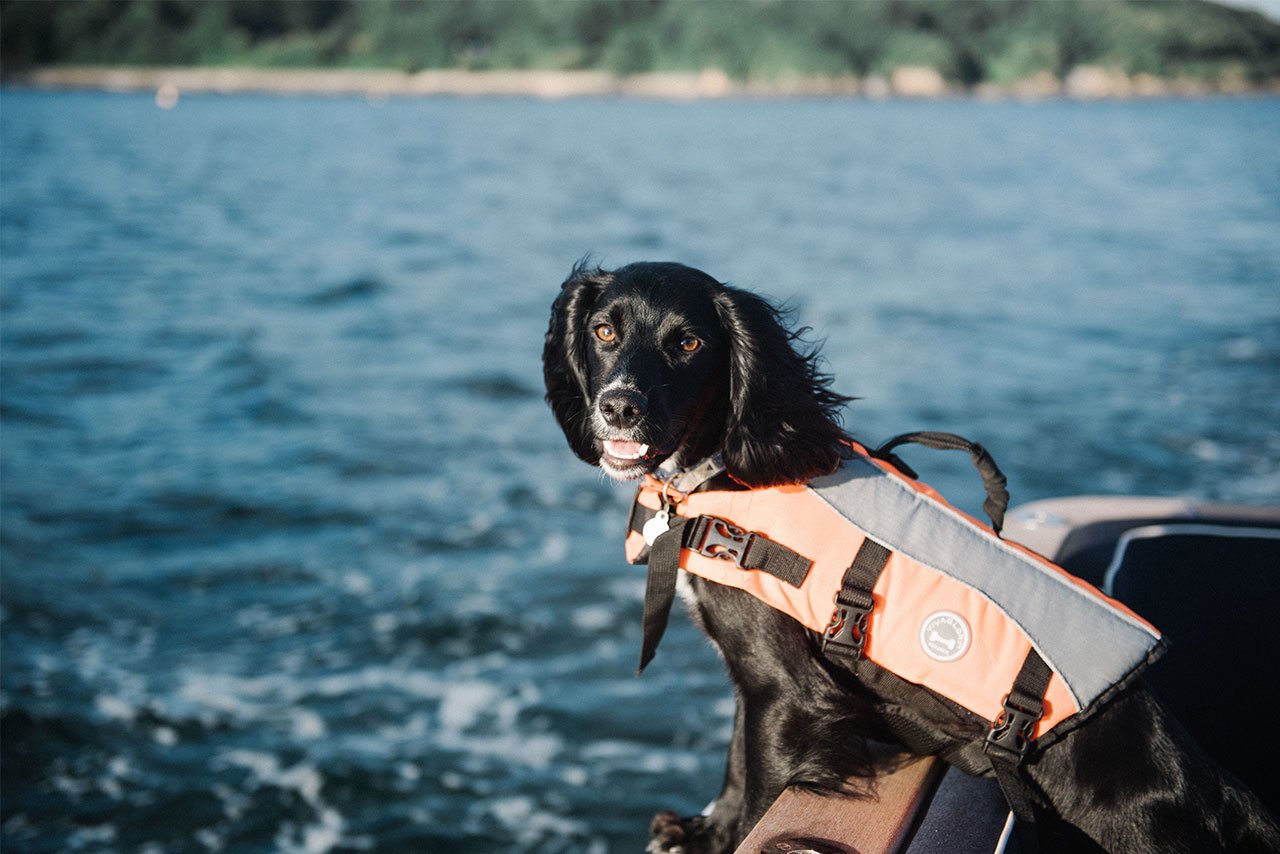Pet Boating Safety

We all know that dogs and the occasional cat love going places with us. Many dogs also love the water. They are instinctive swimmers. So, it seems a shame not to take this member of the family with us when we go out onto the water. Whether it is a kayak, canoe, or motorboat, your pet can accompany you if you follow a few pre-planning and safety measures.
- Get a pet life jacket: This is a must. While dogs are instinctive swimmers, even the best swimmer may become tired or incapacitated and drown if they fall overboard in rough or cold water. Many boating and outdoor stores sell pet life jackets and, if you can, take your pet with you to try on the life jacket before you buy it. The life jacket should fit well but be comfortable and have a strap on top to grab him or her if you need to fish your pet out of the water. It is also a good idea to get your pet accustomed to wearing a life jacket before you go boating. If you bring your cat, they should always wear a harness and be kept on a leash for safety.
- Do not drink the water: While this may be tempting, freshwater lakes can be contaminated from industry or boats and may contain harmful organisms such as giardia and blue-green algae. Pets should never be allowed to drink salt water. Plan on taking plenty of water and a water bowl with you as it may be hot and dry on the water and dehydration can be a concern.
- Sunscreen: Short haired or thin haired dogs need sun protection just like we do. Even some long-haired dogs can have thin hair or be bald in the belly or inside the thighs. Light reflected off the boat deck or water can burn these areas. Consider a sunscreen with an SPF 15 or greater with a neutral scent. Several pet sunscreens are available on-line. For dogs, never use sunscreen with zinc oxide or para-aminobenzoic acid (PABA) as they are toxic if ingested.
- A body of water is not a potty: Take your pet on a walk to relieve himself before getting on the boat. Many lakes, especially wilderness lakes, are water sources for people and should not be contaminated. If kayaking or canoeing, paddle over to the shore and take your pet at least 50 feet in from the shore. If you are in a motorboat, your pet should be trained to go on a pee pad.
- Acclimate: Let your pet get accustomed to the boat beforehand by keeping the first outing short and building up to longer trips. The rocking of smaller boats may be difficult for older, arthritic pets to acclimate to and may flair up their joint issues.
- Teach: Choose a dedicated spot and teach your dog to settle there while the motorboat is underway. You do not want to be distracted or have them underfoot while you are driving. If on a larger boat, consider bringing along a mat or pad for your pet to rest on.
- Shade: When out on the water, boat surfaces on sunny days can get hot. If you cannot hold your hand on a surface for 5 seconds without being uncomfortable, then it is too hot for your pet to walk or lay on. Provide a shaded area where your pet can get out of the sun.
- Have a plan: If your pet accidentally falls overboard, have a plan so everyone knows what to do.
- First aid kit: Bring a pet first aid kit or keep one onboard and stocked. Include Dramamine or another sea sickness remedy. Even a seasoned dog first mate can experience nausea on a rough lake or sea.
- Pay attention: Know where your pet is at all times, just like you would with your kids. If fishing, keep lures, bait, and hooks in a safe place.
- Towel off: Have a dog only towel for those that swim. Microfiber towels are very absorbent and dry quickly. If your pet goes swimming in saltwater or rolls around in the sand, rinse off well with fresh water to prevent skin irritation.
Finally, use common sense! Obviously, if you kayak whitewater, this is no place for a pet. However, even if you only kayak calm waters, your kayak may not be big enough or stable enough to accommodate a pet. As much as you may enjoy boating, it is something your pet may never be comfortable with. Start slow but be willing to accept your pet may not enjoy it as much as you and your family.
